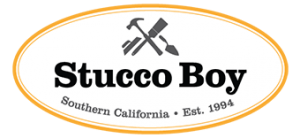Siding and Stucco: Choosing the Best Exterior Finish
When it comes to enhancing the aesthetic appeal and durability of your California home, the choice between siding and stucco is crucial. In this comprehensive guide, we’ll dive into the nuances of Siding and Stucco, shedding light on the factors that can influence your decision and ensuring you make the right choice for your cherished abode.
1. Siding and Stucco 101
They serve as protective layers for your home’s exterior walls, but they differ significantly in composition and application. Siding typically involves the installation of panels or planks made from various materials such as vinyl, wood, fiber cement, or metal. Stucco, on the other hand, consists of a cement-based mixture that is applied directly to the exterior surface of the walls.
2. Climate Considerations
California’s diverse climate, ranging from sunny coastal regions to arid deserts and snowy mountains, poses unique challenges for homeowners. When choosing between these two, it’s essential to consider how each option performs in different weather conditions. While siding materials like vinyl and fiber cement are known for their durability and resistance to moisture, stucco offers excellent thermal insulation and can withstand temperature fluctuations.
3. Siding and Stucco in the Long Run
Durability is a crucial factor to consider when investing in your home’s exterior. Siding materials vary in terms of lifespan and maintenance requirements, with some options requiring regular painting or sealing to prevent deterioration. Stucco, when properly installed and maintained, can last for decades without significant wear and tear, making it a cost-effective choice in the long run.
4. Aesthetics Matter
Beyond durability and functionality, the aesthetic appeal of your home’s exterior plays a significant role in its overall value and curb appeal. Siding offers a wide range of colors, textures, and styles to suit different architectural preferences, from traditional to modern designs. Stucco, with its smooth or textured finish, adds a timeless elegance to Mediterranean, Spanish, or Mission-style homes, reflecting California’s rich architectural heritage.
5. Eco-Friendliness and Sustainability
As environmental awareness continues to grow, many homeowners are prioritizing eco-friendly building materials and practices. Both of them have their eco-friendly attributes, with some siding materials being recyclable and stucco contributing to energy efficiency by providing thermal insulation. Consider the environmental impact of your choice, opting for materials that minimize carbon footprint and promote sustainability.
6. Cost Breakdown
Cost is a significant consideration for homeowners, and the upfront expenses associated with siding and stucco can vary depending on the materials chosen and the size of the project. While siding materials like vinyl and fiber cement tend to be more affordable initially, stucco offers long-term savings due to its durability and minimal maintenance requirements. Factor in installation costs, ongoing maintenance, and potential repairs when budgeting for your exterior finish.
Choosing between siding and stucco for your California home is a decision that requires careful consideration of various factors, including climate, durability, aesthetics, sustainability, and cost. By weighing the pros and cons of each option and consulting with professionals, you can make an informed choice that enhances the beauty and functionality of your home for years to come.
